Shane
November 30, 2023
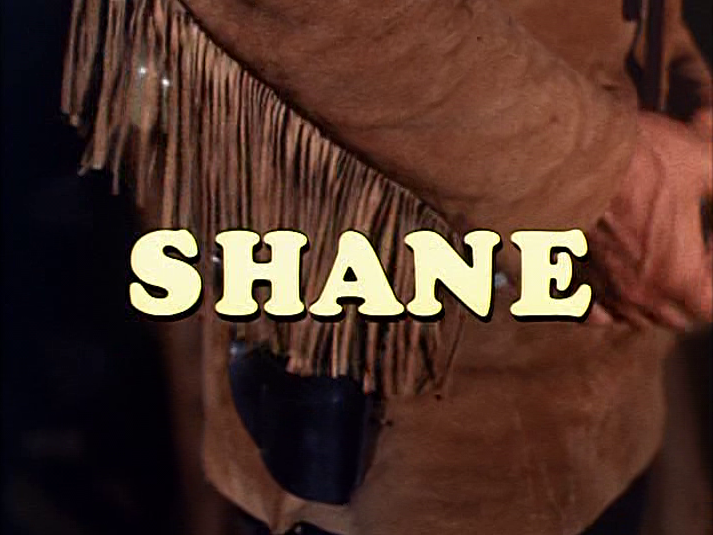
Like the following season’s Hondo, Shane (1966) is probably remembered, if at all, as one of those ill-conceived attempts to turn a movie classic into a television hit – a sheepish bit of intellectual property-mining that quite properly slunk off the airwaves after thirteen little-watched weeks. In fact, this unduly forgotten and mostly still unrediscovered series was one of the best Westerns to mosey along after the genre’s late-fifties television boom had turned to bust. It’s a smart, carefully made show, one with a distinctive visual style and stories that engage in substantive philosophical and political contemplation. Variety, in a tone that may or may not have been pejorative, characterized it as an “intellectual western.”
Shane was the first (and, as it turned out, only) series to emerge from a major realignment of the prominent independent producer Herbert Brodkin’s operations. After a long association with CBS that included Playhouse 90, The Defenders, and The Nurses, Brodkin’s agency, Ashley-Famous, had negotiated a liaison with ABC, still the ratings and carriage underdog among the big three. Meanwhile, Brodkin had sold Plautus Productions, owner of The Defenders and his other pre-1965 output, to Paramount, and had at least informally moved his operations under the film studio’s umbrella. It was a classic “what were they thinking?” acquisition, and the relationship would sour quickly, as Brodkin’s parsimony, contempt for hit-making, and general intractibility became apparent to his new corporate partner. But for a brief moment in 1965, the venerable movie studio saw Brodkin as the potential rainmaker it needed to catch up to MGM, Warner Bros., Fox, and Universal in the television market.
Just as Twentieth Century-Fox was doing concurrently (with The Long Hot Summer and Jesse James), and Warners (Casablanca; Cheyenne) and MGM (The Thin Man; Dr. Kildare) had done a decade earlier, Paramount that year initiated a “crash expansion” (Variety) of its television production by looking for entries in its back catalog of features that could be quickly adapted into ongoing series. Houdini, The Tin Star, and a Stirling Silliphant-scripted, serialized (in imitation of Peyton Place) reworking of Sunset Boulevard were all developed for television. (Who cared that a big-budget TV version of Paramount’s Oscar-winning The Greatest Show on Earth had flopped only a season ago?) Shane, the 1953 prestige western about a brooding gunslinger’s impact on the members of a young frontier family, was another obvious choice, and Paramount farmed it out to Brodkin’s new company, Titus Productions. In June 1965, Brodkin commissioned a pilot script from regular Nurses writer Leon Tokatyan.
Brodkin’s big debut of the 1966 season was supposed to be The Happeners, a topical look at the Greenwich Village arts scene that centered on a trio of folk musicians (vocalist Suzannah Jordan, plus Craig Smith and Chris Ducey, who later recorded as the Penny Arkade and retain a minor cult following among ’60s pop aficionados) and aped the flashy, disjointed look of Richard Lester’s Beatles movies. Instead ABC nixed the $400,000 pilot, citing advertiser disinterest, although I wonder if they were in fact spooked by NBC’s rival project The Monkees (or perhaps by Plautus’s last CBS series, Coronet Blue, a hard-to-describe adventure series that also feinted in a Mod direction, which so baffled the network that all 13 episodes were shelved for two years). ABC’s rejection of both The Happeners and another Brodkin pilot, the international-intrigue story One-Eyed Jacks Are Wild (with George Grizzard in dual roles as a Chicago gangster and a European prince), triggered a “one-for-three” contractual clause that forced the network to pick up Brodkin’s next pitch, no matter what it was. One imagines Brodkin forcing something even more esoteric into production out of spite, but, perhaps hoping to salvage the relationship or just in need of a hit, the producer went with Shane, which was commercially safer and likely cheaper than either of its more ambitious predecessors. Even placing a safe bet, Brodkin floated perversely uncommercial notions, like changing the title to keep the star in line (“If you named your lead character Shane, you can’t ever fire him. If you named it Western Streets, you can”). He lost that one. The pilot script was set aside (or it may have morphed into the episode “An Echo of Anger,” on which Tokatyan has a pseudonymous story credit) and Shane went straight into production.
The creative group in charge of Shane was an amalgam of Brodkin’s talent pool from New York (including half a dozen favored writers and directors he had used on The Defenders), plus a pair of Los Angeles-based young men with bona fide video oater experience: producer Denne Bart Petitclerc and story editor William Blinn. Both were recent Bonanza alumni. Petitclerc and Blinn reported up to David Shaw, who had evolved into the de facto showrunner of The Defenders at some point in the back half of the show’s run, after creator Reginald Rose scaled back his involvement due to exhaustion. Shaw – forever in the shadow of an older brother, Irwin, who after the war had become one of the country’s most prominent prose writers – had been a live TV playwright of moderate stature, associated with the Philco/Goodyear Playhouse during the period when its impresario, Fred Coe, was nurturing the likes of Paddy Chayefsky, Horton Foote, and Tad Mosel. Shaw’s work, though generally of high quality, had few of the overtly personal themes that made those writers’ reputations. Brodkin made him a partner in Titus Productions and Shaw leveraged the Shane job to pay for a move from the Big Apple’s dwindling prime time industry to Los Angeles, where he lived for the rest of his life.
(I met him there by chance one day in 2004 in the Century City Mall. I recognized Shaw’s second wife, the character actress Maxine Stuart, and followed them into a pharmacy, awkwardly introducing myself while they waited for their prescriptions. A nice man, Shaw later endured an interview, although he had long since shifted his creative focus from writing to painting, and seemed unencumbered by nostalgia for his television career. “Stupid idea,” he said of Shane. “I mean, Shane is a guy who travels around. You couldn’t have that [in a weekly series]. And we built a set. He was always about to leave and then he has to stay, every week.”)

Playing Shane was David Carradine, the oldest son of the eccentric character player John Carradine, but a prospective leading man due less to nepotism than to a recent, buzzy Broadway turn as an Inca god in The Royal Hunt of the Sun. In publicity for his new gig, a helpful Carradine disparaged the late Alan Ladd’s performance in the original Shane (“not really an actor at all but a personality” who “brought very little to the film”), and referred in another interview to Shane’s directors as “traffic cops” and its writers as “plotmongers.” He at least bonded with Petitclerc, a Hemingway acolyte and counterculture-adjacent figure who would later create the semi-autobiographical biker drama Then Came Bronson (which also starred a young actor with a talent for putting his foot in his mouth). Cocky or not, Carradine was the real deal, confident on camera and clearly a star in the making, but youthful in a way that contrasted with the world-weariness Ladd (ten years older in his Shane) brought to the character. Carradine cited Steve McQueen as a point of reference, and it’s easy to see McQueen’s opacity and reserve reflected in Carradine’s Shane.
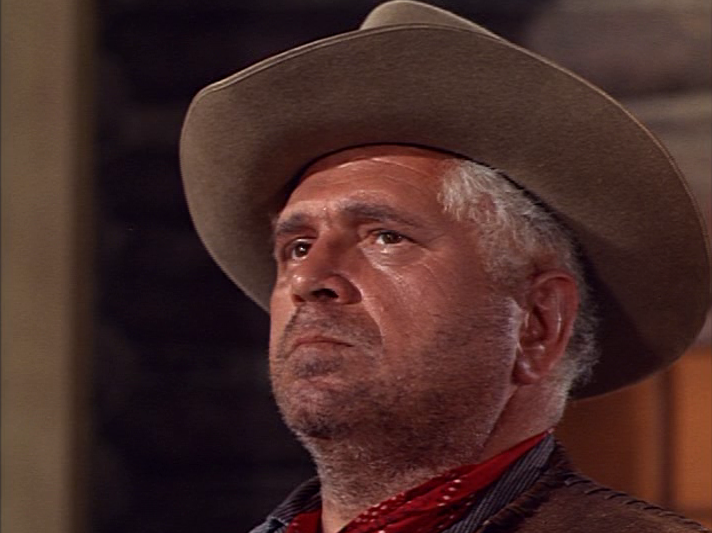
The rest of the cast was hit-or-miss: the English ingenue Jill Ireland, too delicate to believe as a single mother toughing it out on the range, and beefy Bert Freed, an odd actor whose scowling boulder of a face was undercut by a soft voice and a diffident affect, as the villain Rufe Ryker. Freed was the guy you hired after Clifton James turned you down, although on the whole Shane succeeded at getting some Big Bad mileage out of his look alone. Folksy Tom Tully (who had enjoyed a recent career boost in Alan Ladd’s final feature, The Carpetbaggers) counterbalanced Freed as Tom Starett, Marian’s aged father-in-law.
Tully’s character is not in George Stevens’s Shane, and in the television series he takes the place of the character played in film by Van Heflin, the young husband/father. The movie’s most complex dynamic was the rivalry between Shane and Joe Starrett for the affections of Joe’s wife and son; while the boy’s hero worship of the outlaw is overt, Marian’s sexual attraction to Shane (and Shane’s own feelings for his friend’s wife) go largely unstated. The spectre of infidelity, suppressed in the film but perhaps less containable on a weekly basis, would’ve been a touchy subject for sixties television. Shane solved that problem neatly by making Marian a widow, its only significant change from the premise of the film. The other familial element that distinguished the feature – the tow-headed tyke whose point of view sometimes framed the depiction of violence and other adult motifs – remained intact, with the casting of a child actor (Chris Shea) who was virtually identical to the original’s Brandon de Wilde. Young Joey’s anguished cry of “come back, Shane,” from the indelible (and often lampooned) climax of the film, even makes an appearance in the third episode, “The Wild Geese.”
As David Shaw told me, the producers were preoccupied at the outset with making Shane’s clash between drovers and settlers sustainable. Shaw’s script for the first episode, then, reduces the film’s existential battle for the land to a skirmish, over the construction of a schoolhouse which comes to symbolize the permanence of the farmers’ community. This central conflict remains underdeveloped, but a side story in “The Distant Bell,” in which a schoolteacher (Diane Ladd) imported from the East realizes she has no stomach for frontier violence, begins to find the film’s sense of size and danger.
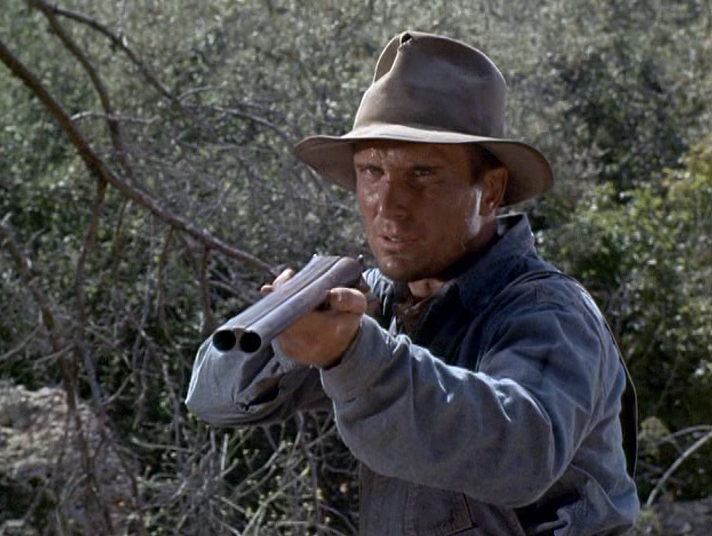
As its makers reprised some of the same topics they had broached in a quite different context in The Defenders, Shane affords a rare opportunity to examine what a leftist western looks like in practice. “Killer in the Valley,” in which plague comes to Crossroads, is a muted critique of capitalism that centers on a sleazy medicine drummer (Joseph Campanella) who exploits the tragedy for profit. Other episodes acknowledge the role of money in society in unexpected ways. In “The Wild Geese,” for instance, the bad guys turn upon one another after the rest of the gang learns that their leader (Don Gordon) is paying his newest recruit, Shane, more than them.
Ernest Kinoy’s “Poor Tom’s a-Cold” offers a progressive colloquy on mental illness, with Shane advocating talk therapy for a sodbuster (Robert Duvall) whose mind has been broken by the hardships of the frontier, while Ryker wants to put him down like a rabid dog. Shane compares Duvall’s character to a spider who keeps rebuilding a misshapen web, unaware that he can no longer conceive of how it should be spun, in the best of a series of compassionate monologues that Kinoy assigns to every character. Ellen M. Violett, the only woman who wrote for The Defenders, contributed a fascinating script about female desire, told from Marian’s point of view. The relatively weak lead performances (from Ireland and guest star Robert Brown) keep “The Other Image” from being the pantheon piece it might have been, but the ending, in which Shane and Marian work off their unspoken, pent-up sexual energy by chopping an entire winter’s worth of wood together, is brilliant.
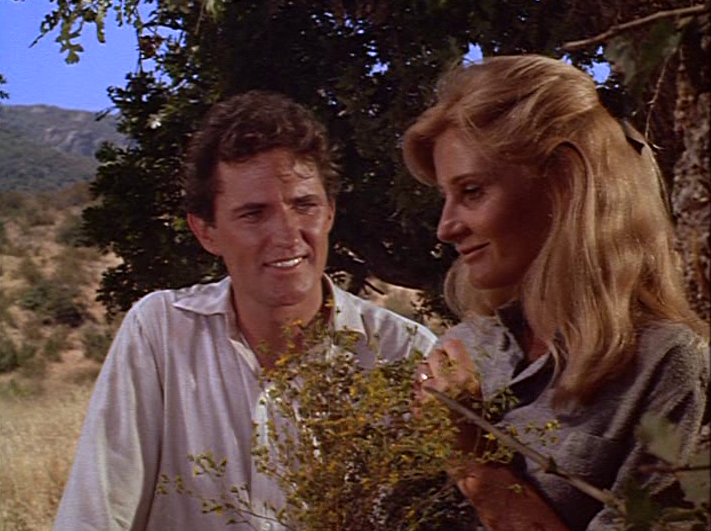
Consistently, Shane discovered in its reluctant-hero protagonist opportunities to contemplate and often advocate for pacifism. Petitclerc’s “The Day the Wolf Laughed” is an outlaws-occupy-the-town story in which Shane offers a pragmatic, non-confrontational solution – the bandits entered Crossroads flush with loot and have promised not to plunder, so just wait them out – but Ryker’s boorish pride pushes the gunmen toward carnage. A more typical Western (like Gunsmoke, which did several variations on the town invasion premise) would usually invert these politics, casting the town’s craven merchant class as the appeasers while Matt Dillon or Festus maneuver to secure the advantage in a violent confrontation. Kinoy’s “The Great Invasion” depicts, with sympathy, a veteran so traumatized by the sound of gunfire that he won’t raise a hand to defend himself or others, and his “The Hant” subverts the catharsis of violence even more compellingly as it unveils a diabolical high-concept premise: an old man (John Qualen), the father of a gunslinger Shane shot down years earlier, turns up with a plan not to bury Shane in Boot Hill but to adopt the nonplused protagonist as a surrogate son to replace the one Shane killed. This was Blinn’s favorite episode, and decades later, in an interview in Jonathan Etter’s Gangway, Lord! The Here Come the Brides Book, Blinn enthused about a detail in Kinoy’s script that got somewhat lost in the execution: that Shane had killed so many men he couldn’t remember this one. “Day of the Hawk,” with James Whitmore as a preacher who embraces pacifism to stifle his dangerous, compulsive anger, is more skeptical, offering a cynical outcome in which the clergyman kills a semi-sympathetic character in cold blood in order to, perhaps, prevent an even greater tragedy. Here, too, though, the script (by Blinn and Barbara Torgan) gives Shane an unconventional point of view to articulate, a critique of organized religion as an ineffectual, self-indulgent response to the very tangible problems faced by settlers.

The best Shane episode is probably the sole two-parter (especially the first half), which has, among other things, Charles Grodin, in his first West Coast screen acting job, as a snotty New Yorker who gets his ass whupped (twice) by Carradine; Constance Ford as an extremely butch version of Calamity Jane who nevertheless has a Black male lover (Archie Moore, another veteran of Paramount’s The Carpetbaggers); and the Gatling gun as an explicit avatar of a technological escalation in frontier violence, three years pre-Wild Bunch. Again written by Ernest Kinoy, “The Great Invasion” anticipates the George Hearst storyline from Deadwood. Shane tries to make the homesteaders understand that the encroaching Eastern conglomerates pose a bigger threat to them than their accustomed antagonist, the small-potatoes cattle baron Ryker, but none of them can see the big picture, not even the Starett family. The Cheyenne moguls’ strategy involves hiring a mercenary (Bradford Dillman) to push the ranchers off the land on the flimsy pretext of hunting down outlaws. Kinoy’s target is not only predatory capitalism but also the fearmongering law-and-order politics that often enable it.
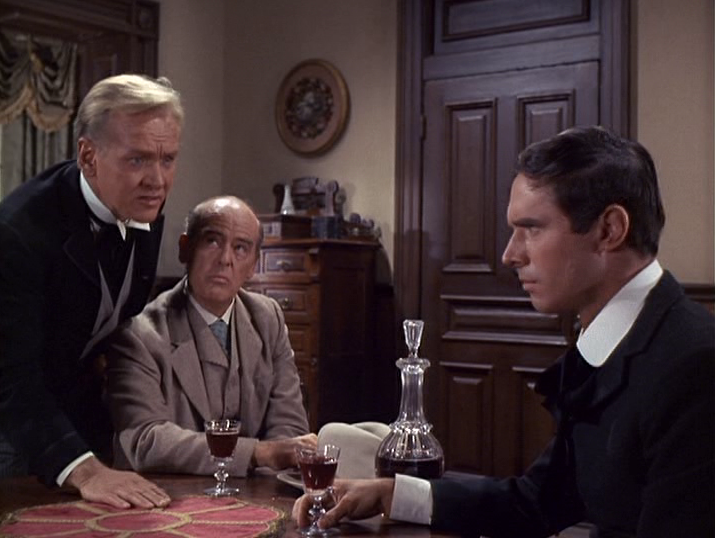
If that sounds dry or esoteric, it’s not, mainly because “The Great Invasion” is distinguished by one of the richest villains I’ve encountered in a television western. The conglomerate’s enforcer, General George G. Hackett, is a West Pointer who openly asserts that he is destined for military glory and an articulate gourmand who sneers at his employer for disdaining sweetbreads. He’s insufferable as well as psychotic, an unstable martinet who leads his men (arguably with some effectiveness) by inspiring fear rather than loyalty. Kinoy presents Hackett as at once formidable and pathetic, and Dillman, as good here as he ever was, grasps this contradiction and centers it as the essence of a dynamic and unexpected performance.
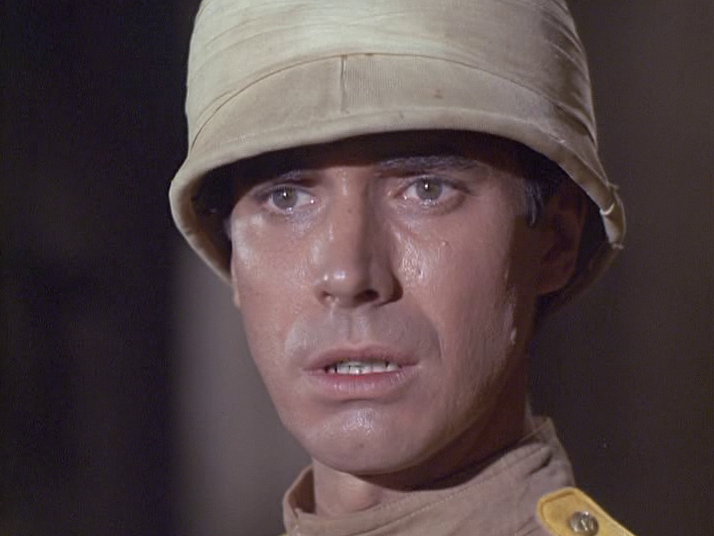
Am I going overboard in positing “The Great Invasion” as an allegory, conscious or unconscious, for the clash between Eastern (New York) and Western (Hollywood) sensibilities in Shane? Alongside the tropes I’ve detailed above, a countervailing and fairly compatible strand of sentiment runs through Shane, in scripts both syrupy (Ronald M. Cohen’s “The Silent Gift”) and satisfying (most of Blinn’s). The original Shane is about a frontier family, and it’s appropriate that some episodes should foreground this element (even after subtracting a key member of that family). The best of the domestic entries, “High Road to Viator” (at first titled, much more evocatively, “Blue Organdy”), concerns the theft, by scavenging Native Americans, of Marian’s prized party dress, and Shane’s efforts to recover it. Depicting in some detail the preparations for a three-day journey to another settlement to attend a party – Joey, we learn, has never heard of a piano – “Viator” runs high on warmth and atmosphere, and low on incident.
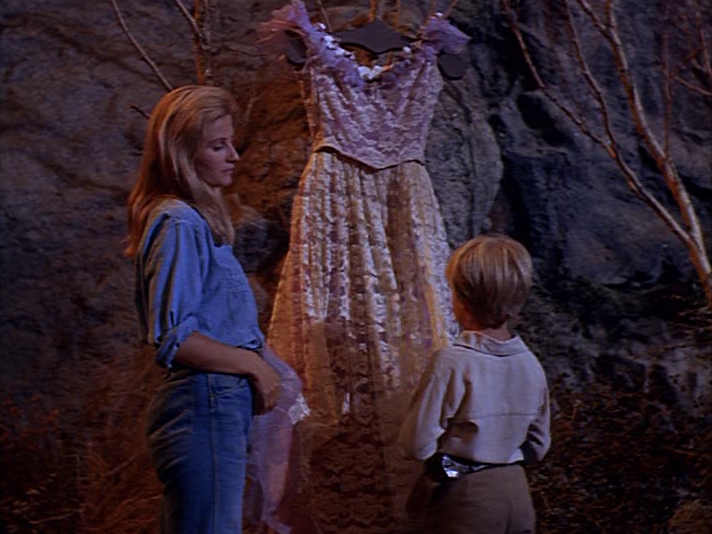
The family-oriented episodes, in particular, showcase this minimalist aspect of Shane, which seems to have motivated the show’s somewhat atypical formal strategies. Brodkin famously embraced the close-up as the building block of television mise-en-scene, and showed little curiosity about the vibrant New York world outside the courtroom and hospital settings of his CBS hits. Those precepts recur and flourish in Shane, a Western that plays out to an unusual degree in interior spaces, gorgeously amber-lit by director of photography Richard Batcheller (a longtime camera operator who had just matriculated to cinematographer gigs and died young, in 1970), and on the faces of the actors. “High Road to Viator” can plausibly be described as a “bottle show” (a deliberately under-budget effort to offset overages on other episodes), but so can several other Shanes, and the last one, “A Man’d Be Proud,” is a bottle show’s bottle show, a television hour as devoid of add-ons (no guest stars, no off-lot locations or new sets, no stunts) as it is possible to make.
If you ask whether these austere choices reflect profit motive or aesthetic preference, the answer is “yes” – the considerations are basically inseparable. (Compare Brodkin, perhaps, to Roger Corman and Russ Meyer, low-budget auteurs who were given big-studio toolkits and, on a fundamental, psychological level, couldn’t scale up to make full use of them.) A year after its cancelation, Variety snickered about how Titus Productions had pocketed a $30,000 per-episode profit on Shane, never mind the show’s conspicuous failure and presumed unsyndicatability. Blinn, in the Jonathan Etter interview, described a running battle between ABC, which wanted more action on screen, and Brodkin, who wanted them to pay extra for it; in the end, neither won. (Anecdotally, cutting corners to guarantee net income from the license fee seems to have been Brodkin’s business model during his Plautus days too, although I haven’t studied the balance sheets.) In The Defenders and The Nurses the professional settings compelled a claustrophobic feel, and a credible argument could be mounted that the scripts’ consciously didactic approach benefited from the absence of adornment or distraction. What’s remarkable about Shane is that, rather than showing up Brodkin as an indifferent cheapskate, it makes the same minimalism work just as well within a genre that typically opts for expansiveness.
It can be difficult, at a remove of decades, to assess a network and a studio’s commitment to a given project, but one reads between the lines and guesses that by the time it premiered in September 1966, Shane was a burnoff. Scheduled for the 7:30 slot on Saturday nights, it was predictably creamed by Jackie Gleason, although the third competitor – NBC’s Flipper – also trounced it, underlining the difficulty of marketing a western as wholesome family fare. (A few years later The Waltons and Little House on the Prairie would solve this riddle by keeping the period survival-struggle elements of the genre and ditching the rest.) By October the trades were already guessing at what would replace Shane on the midseason schedule, and in the end the show’s airdates were just tight enough to record the same year of birth and death in the history books.
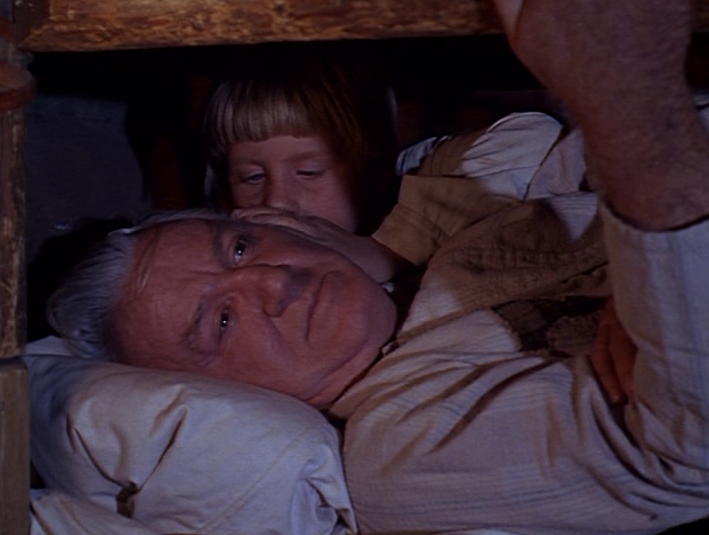
The few people still watching Shane on the last night of 1966 were greeted with that rarest of things in early episodic television: a resolution. The show’s instant lame-duck status gave Petitclerc and Blinn time to craft a finale that tied up the main characters’ storylines, perhaps only the second (after Route 66) in a prime-time dramatic series. After briefly considering Ryker as a serious romantic partner – not terribly plausible given all the mean things we’ve seen him do, but the writers have some devil’s-advocate fun making the stability he represents look tempting – Marian instead chooses Shane. Deliberately, I suspect, Petitclerc and Blinn invert the ending of the film, adopting their anti-hero into the community rather than casting him into the wilderness. This Shane does come back, or, rather, he opts not to leave at all. The series’ sweet last scene has an unnoticed Joey mouthing “wow” as he overhears Shane and Marian’s commitment to each other, then awakening his grandpa and whispering the news in the old man’s ear. It’s an unexpected shift away from the ostensible protagonists, and a fitting reprise of the subtle, off-center approach that defined this appealing little western.
Author’s note: Expanded and revised slightly in January 2024.
November 30, 2023 at 10:31 pm
Seeing this made my day. It has been a awhile. Speaking of adaptions, have you ever considered covering the Fox/ Quinn Martin hybrid “12 O’Clock High” or Robert Lansing in “87th Precinct”?
November 30, 2023 at 11:25 pm
Thanks, Paul. I doubt I’d write about those shows in this format, but maybe from some other angle. Lansing would be an interesting subject. Tim Lucas, incidentally, was covering 12 O’Clock High in some of his Facebook posts this year, although I realize those are hard to dig up when they’re not very recent.
November 30, 2023 at 11:37 pm
Welcome back, Stephen. Your analysis of Shane is spot on!
I first saw Shane on TV Land, and when it was taken off, I was disappointed as I missed out on the last episode that gave the series a proper finale. I was most happy when I discovered the show had a DVD release, and it’s a pleasure to be able to watch the complete run over and over again! Of all the short-lived TV Westerns I’ve seen on home video, Shane is one of the the best, warts and all.
Any plans on reviewing more one-season Westerns?
November 30, 2023 at 11:57 pm
Nothing in the works, but there are a lot of second-tier westerns I haven’t seen (or at least haven’t finished), and “fresh” recreational viewing will probably be a source of inspiration if I keep this going. Glad you enjoyed Shane as well.
December 1, 2023 at 1:46 am
Absolutely brilliant take on the Shane TV series, Stephen. Your wrting is brilliant, and I look forward to seeing more of your work.
December 4, 2023 at 3:46 pm
hi. So glad you’re blogging ng again
December 4, 2023 at 3:55 pm
How about Empire and Redigo, so called modern westerns? I love Empire and have around 20 of the 30 episodes filmed, and have always wondered why there has never been an official release of a color series which included Richard Egan, Ryan ONeal and Charles Bronson as regulars.
December 5, 2023 at 1:58 am
Empire is a great suggestion. I share your enthusiasm for it and the backstory is an interesting one, if it could be reported fully enough.
Something that occurred to me a while ago is that one of the “books” I’ve been writing in pieces, here and when I was doing features for The A.V. Club, is a subjective guide to forgotten or underseen 1950s-70s TV shows that I’d like people to know more about and to seek out, if they’re available.
December 6, 2023 at 9:02 pm
Looking forward to more posts!
December 8, 2023 at 9:09 pm
SHANE and HONDO are both worthy shows and one doesn’t have to be a fan of the feature film to enjoy the series in either case. GetTV has aired both on the weekends in recent years. The latter has proven exceptionally durable, with a 10 year run on T.N.T. (1989-1999) followed by what has been a run of 8 1/2 years and counting on GetTV since premiering there in Sept. 2015.
I agree with you on SHANE’s finest episode, the two part Invasion, though Wild Geese comes close IMO.